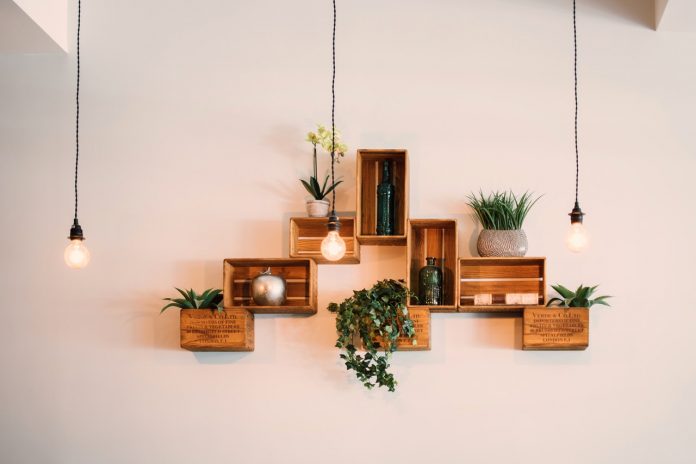April showers typically bring May spring cleaning. However, you might find yourself needing organization or giving a facelift to your current shelving setup.
Here we will break down how to get started with shelving, from determining where to shelf and what kind of shelving, to how to do it!
Where do you need shelving?
Have you run out of storage space and need to work your way up. Perhaps you have prized possessions that you wish to display?
Determining your location’s demands is the first step in getting visually organized. This will also focus your type of shelving on being private or public, for function vs. design.
Some possible locations:
- Closet
- Garage
- Bedroom/Living Room
- Bar/Kitchen
- Kids Room
What kind of shelving do you need?
Now is when you decide which shelving path you will take. A path that is strictly vertical and keeps everything hanging or one that serves as a piece of furniture that can serve multiple functions.
Bookcases are traditionally a piece of furniture that can ground a room and provide some height variation to your living space.
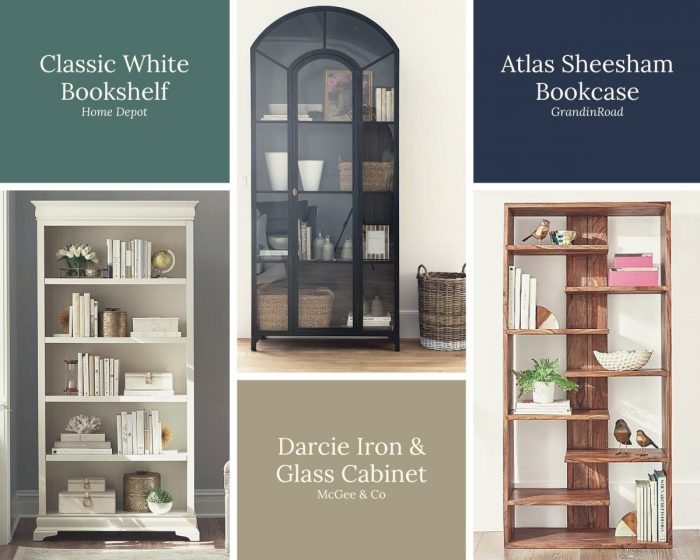
Leaning Shelves are a modern take on bookcases, typically more casual and open.
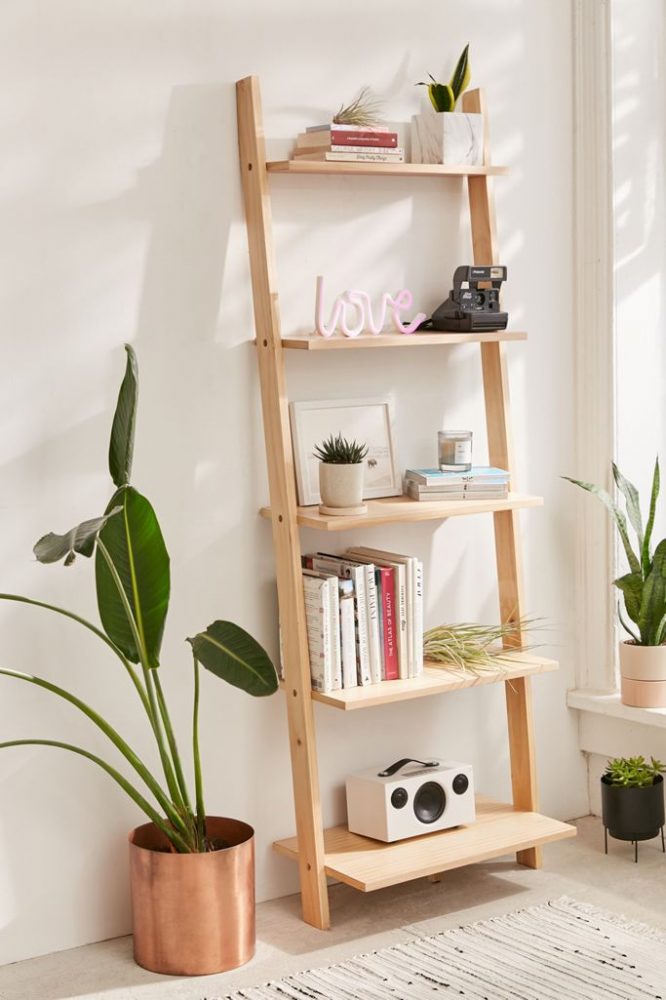
Etageres are a more open concept version of a bookcase that brings a great way to add mixed materials to your display, commonly a mix of metal and glass or metal and wood.
- Jonathan Adler Jacques Etagere Bookcase – Designer
- 5 Tier Etegere Bookcase – Budget Friendly
- Weldon Etagere Bookcase – Modern

Built-Ins are very popular for new construction or remodels, as they take the place of furniture and provide a clean way to organize and display. Built-ins also often increase the resale value of your home, showing architectural character!
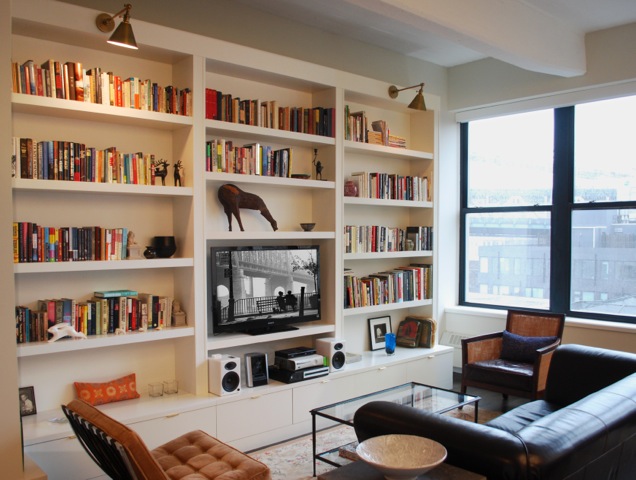
Corner Shelves are a great way to maximize the use of all your square footage – no one ever has enough storage and corners can often become wasted space.
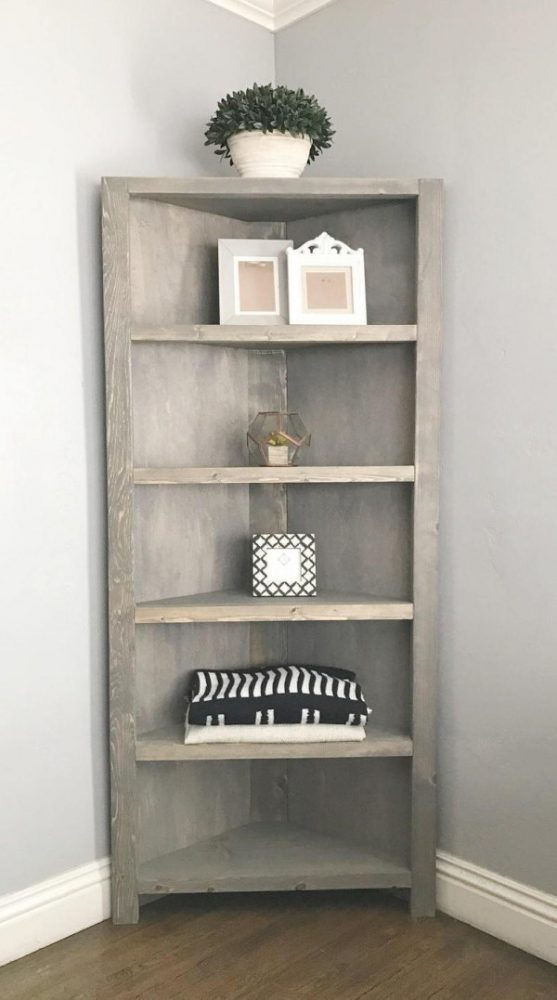
Geometric and Cubic Shelves are super fun ways to show your personality, serving not only in a functional way but also as pieces of art!
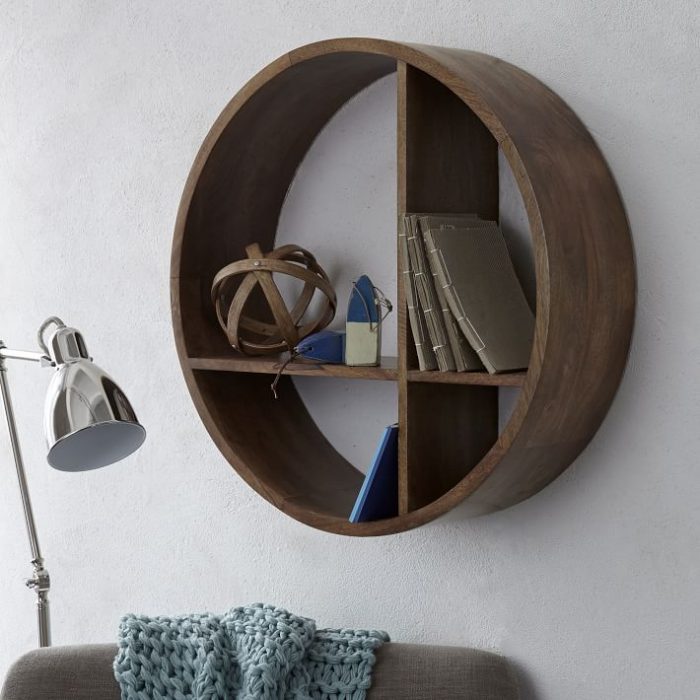
To Buy or DIY?
This is where it gets personal…are you a DIY kind of guy or gal? If home improvement is something you’ve always wanted to try, there’s no better time than the present to give it a go!
However, if you’re needing your shelves to bring you instant organization to de-stress your environment, then save your time, as there are many different price point options to fit whatever your needs may be.
For the DIY’ers, here are some great links on How to Build Your Own Shelves:
What’s Your Style?
Are you looking for something more rustic farmhouse to update your shabby chic kitchen?
Or maybe you are wanting to add some glam to your cocktail hour. Determine what your personal style is and that will narrow down your search.
What to Display on Your Shelves?
Okay, so now you have your perfect shelves – but you can’t leave them hanging… what will you display on them?
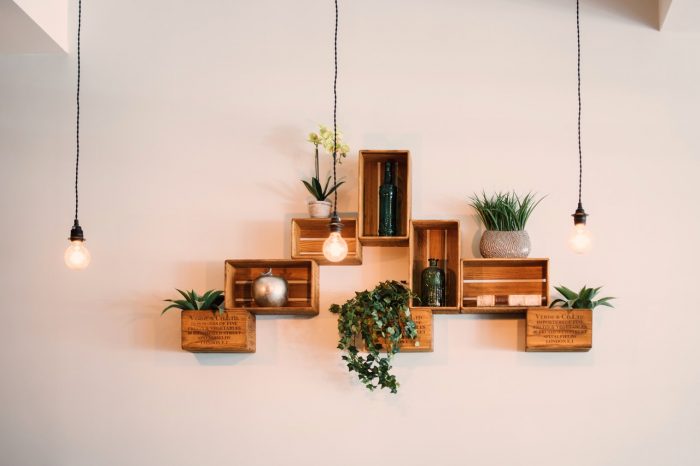
PSA Reminder: Display shelves in public areas should be just that … displaying items you are proud to have on display, so keep the clutter in the closet.
Items to Display:
- Decorative Bowls
- Vases
- Decorative Boxes
- Candles and Candleholders
- Collected Objects
- Picture Frames
- Pieces of Art
- Trays
- Books
- Botanicals
- Small Items
- Large Items
- Pops of Color
- Variety of Textures and Materials
Other Resources:
How to Display?
Display design might be the most important and final step in utilizing shelves. This is what sets visual display shelves apart from closets and cabinets. There is a reason you are using shelves and not hiding your items, so make sure they have the proper platform to shine!
Rule #1: There are no rules, this is your unique space and it should be uniquely you. These are just some guidelines and tips to get you started on creating your space!
Balance: You might like symmetry, or you might be more asymmetrical. This is all up to you. Whichever design direction you choose, remember that whether it’s symmetrical or asymmetrical it needs to be visually balanced.
Rule of Thirds: This is very helpful for balancing your shelves. Imagine that you have drawn 3 imaginary lines to equally separate your shelves into thirds. Each section should have the same amount of visual weight throughout the overall composition, so your eye isn’t drawn to one area that’s visually heavier than another.
Use Diagonal Lines: Try to not line everything up on your shelf like toy soldiers, use diagonals to draw your eye to different heights.
Larger Items: This is where less is more, if you have larger items, allow them to have their own space.
Rule of 3: Items of smaller or medium scale are great in groupings of 3.
Stack Vertically and Horizontally: Stacks of books or boxes break up straight lines and bring variety. Remember not to only stack vertically or only stack horizontally – mix up the two!
- How to Decorate Bookshelves
- 10 Tips for Decorating Shelves Like a Pro
- Tricks for Decorating Shelves by Joanna Gaines
To wrap it up, we now know how to get started in conquering shelf displays: determining where we need to organize, what type of organization we want, how to get the shelves we want, what to display and where to display them.
Other Helpful Posts:
